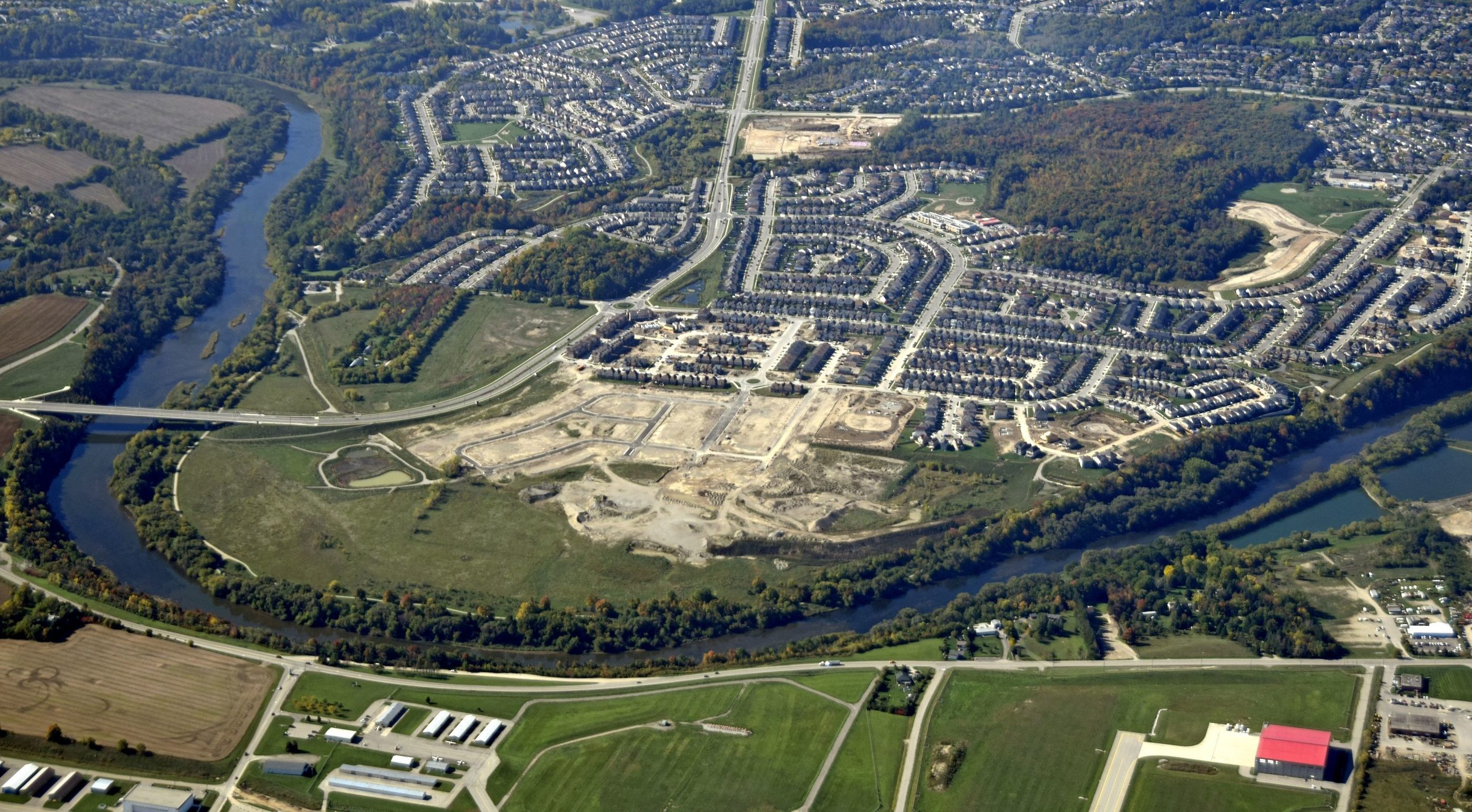Urban growth boundaries are created by governments in an effort to concentrate urban development—buildings, roads, and the utilities that support them—within a defined area. These boundaries are intended to decrease negative impacts on people and the environment. However, policies that aim to reduce urban sprawl may be increasing water pollution, according to a Penn State researcher.
“What we were interested in was whether the combination of sprawl—or lack of sprawl—along with simultaneous agriculture development in suburban and rural areas could lead to increased water quality damages,” said Douglas Wrenn, an associate professor in Penn State’s College of Agricultural Sciences.
According to Wrenn, one of the reasons why anti-sprawl policies can lead to more water pollution is because higher-density development has more impervious surfaces, such as concrete. These surfaces don’t absorb water but cause runoff. The water then flows into bodies of water and brings sediment, nitrogen, and phosphorus with it.
Secondly, agriculture creates considerably more water pollution than low-density residential areas. And when development outside of the boundaries that could replace agriculture is prevented, the amount of pollution that could be reduced is lost.
“If you concentrate development inside an urban growth boundary and allow agriculture to continue business as usual,” Wrenn said, “then you could actually end with anti-sprawl policies that lead to an increase in overall water quality damages.”
Wrenn said it is important for land-use planners in urban areas, especially in urbanizing and urban-fringe counties, to understand this.
The EPA’s water quality regulation is divided between point source and nonpoint source polluters. Point source polluters include wastewater treatment facilities, big factories, consolidated animal feeding operations, and stormwater management systems. Nonpoint sources are essentially everything else. The EPA’s Clean Water Act (CWA) does not regulate nonpoint sources, which include agriculture.
“When it comes to meeting [total maximum daily load] TMDL regulations, point source polluters will always end up being responsible,” he said. “They are legally bound to basically do it all.”
As a part of the EPA’s Clean Water Act (CWA), TDML regulations govern how much of pollutants like nitrogen, phosphorus, and sediment are allowed in a body of water while still meeting water quality standards.
Wrenn said point source polluters are very interested in getting nonpoint source polluters, specifically agriculture, involved in reducing pollution because their cost of reduction is usually far less expensive and often times more achievable.
This research was published in the November 2019 issue of “Resource and Energy Economics.” In addition to Wrenn, the project included H. Allen Klaiber of The Ohio State University and David Newburn of the University of Maryland.









